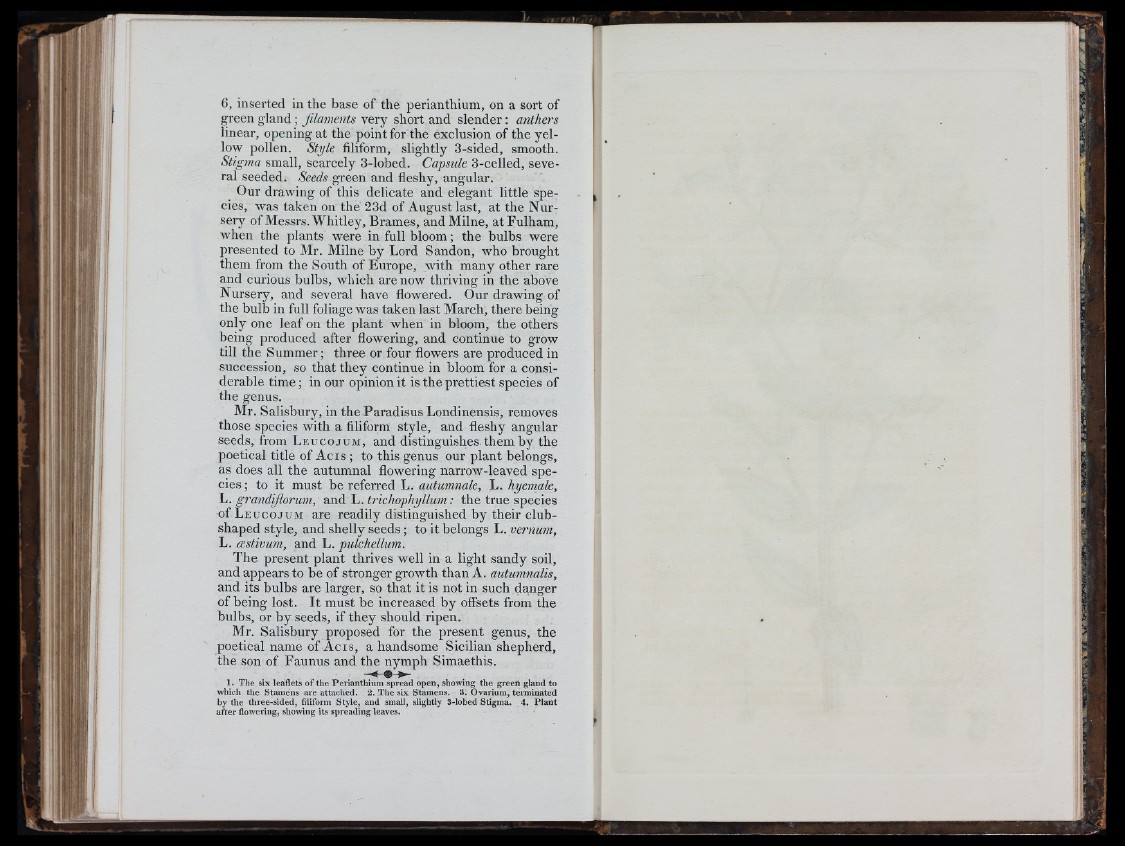
6, inserted in the base of th e perianthium, on a sort of
gjeen gland ; Jilaments very short and s len d e r; anthers
linear, opening a t the point for the exclusion of the yellow
pollen. Style filiform, slightly 3-sided, smooth.
Stigma small, scarcely 3-lobed. Capsule 3-celled, several
seeded. Seeds green and fleshy, angular.
Our drawing of this delicate and elegant little species,
was taken on the 23d of A ugust last, at the N u rsery
of Messrs. Whitley, Brames, and M ilne, a t Fulham,
when the plants were in full bloom; the bulbs were
presented to Mr. Milne by Lord Sandon, who brought
them from the South of Europe, with many other rare
and curious bulbs, which are now thriving in the above
Nursery, and several have flowered. Our drawing of
the bulb in full foliage was taken last March, there being-
only one leaf on the plant when in bloom, the others
being produced after flowering, and continue to grow
till the Summer; three or four flowers are produced in
succession, so th a t they continue in bloom for a considerable
tim e ; in our opinion it is the prettiest species of
the genus.
Mr. Salisbury, in th e Paradisus Londinensis, removes
those species with a filiform style, and fleshy angular
seeds, from L e u c o j u m , and distinguishes, them by the
poetical title of A c is ; to this genus our plant belongs,
as does all the autumnal flowering narrow-leaved species
; to it must be referred L. autumnale, L. hyemale,
B. grandijlorum, andV.trichophyUum: the true species
of L e u c o j u m are readily distinguished by their club-
shaped style, and shelly se ed s; to it belongs L. vernum,
L. (Estivum, and L. pulchellum.
The present plant thrives well in a light sandy soil,
and appears to be of stronger growth than A. autumnalis,
and its bulbs are larger, so th a t it is not in such danger
of being lost. I t must be increased by offsets from the
bulbs, or by seeds, if they should ripen.
Mr. Salisbury proposed for th e present genus, the
poetical name of A c is , a handsom-e Sicilian shepherd,
the son of Faunus and the nymph Simaethis.
1. The six leaflets o f the Perianthium spread open, showing the green gland to
which the Stamens are attached. 2. The six Stamens. 3. Ovarium, terminated
by the three-sided, filiform Style, and small, slightly 3-lobed Stigma. 4. Plant
after flowering, showing its spreading leaves.